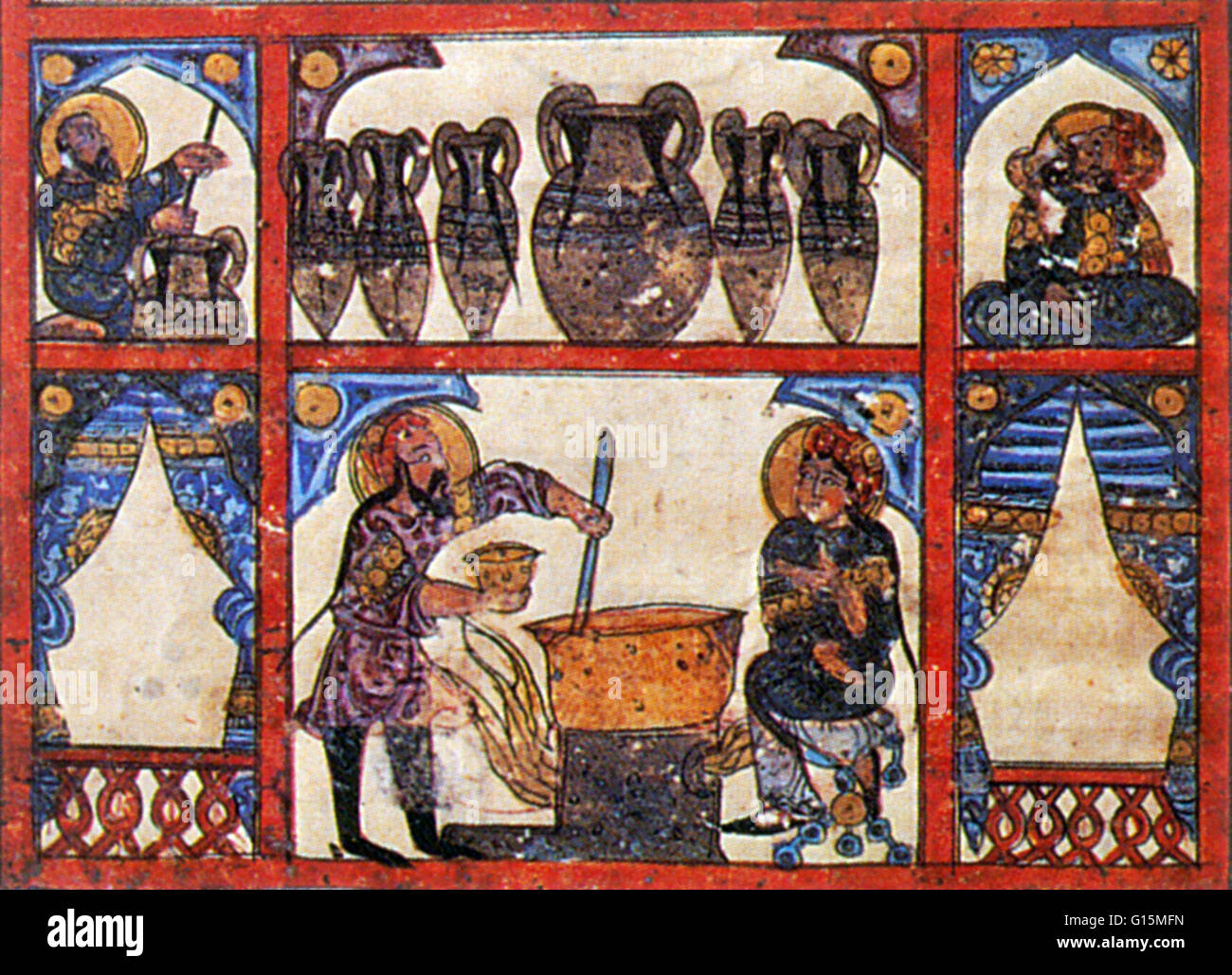Arabic artwork entitled "The Preparation of Medicine from Honey" from a 1224 Arabic translation of the manuscript De Materia Medica, written by the ancient Greek physician Dioscurides (40-90 AD), in which he described herbs and herbal remedies. A doctor c

Image details
Contributor:
Science History Images / Alamy Stock PhotoImage ID:
G15MFNFile size:
26.4 MB (1.6 MB Compressed download)Releases:
Model - no | Property - noDo I need a release?Dimensions:
3577 x 2584 px | 30.3 x 21.9 cm | 11.9 x 8.6 inches | 300dpiPhotographer:
Photo ResearchersMore information:
This image could have imperfections as it’s either historical or reportage.
Arabic artwork entitled "The Preparation of Medicine from Honey" from a 1224 Arabic translation of the manuscript De Materia Medica, written by the ancient Greek physician Dioscurides (40-90 AD), in which he described herbs and herbal remedies. A doctor can be seen stirring the medicine in a large bowl over an open fire (center), while the large pots (urns) used to store it are at top. Apothecary is a historical name for a medical professional who formulates and dispenses materia medica to physicians, surgeons and patients. First public pharmacy opens in Baghdad in 754 during the Islamic Golden Age. Apothecaries were also active in Islamic Spain by the 11th century. More than half the remedies and healing aids used by the west came from Islam, including senna, rhubarb, tamarind, nux vomica, kermes, camphor, syrups, juleps, plasters, pomades, unguents and distilled water.